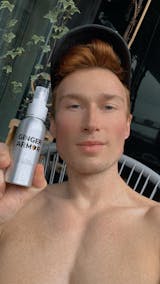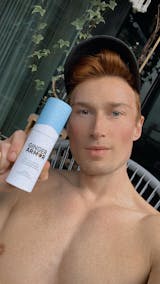Why are Redheads More Susceptible to Melanoma?
At one time or another, you may have heard that people with red hair have to protect themselves from the sun due to a higher risk of cancer. But how can hair color really impact skin cancer? What’s the scientific reason?
Over the last several decades, there has been quite a bit of research done to study the correlation between skin cancer and redheads.
This research has shown that there is a genetic component that can explain why someone with red hair is more likely to develop skin cancer. There is one type of skin cancer in particular that red-headed individuals are most susceptible to, melanoma
Keep reading to learn more about why redheads are more susceptible to melanoma and how to protect your skin!
What is Melanoma?
According to the Mayo Clinic, melanoma is the most serious type of skin cancer that can develop just about anywhere on the body.
Most people notice a change in a pre-existing mole or a new, dark-colored skin growth as their first symptom.
While the exact cause of melanoma is unknown, existing research shows that increased exposure to UV radiation (through both direct sunlight or the use of a tanning bed) can increase the likelihood of melanoma development.
There are five signs to look out for when inspecting unusual skin moles that could indicate a possible melanoma. Those signs correlate with the first 5 letters of the alphabet:
- A - Asymmetry
- B - Boarder
- C - Changes in Color
- D - Diameter
- E - Evolving
Melanoma and the MC1R Gene
Some researchers have studied the connection between increased likelihood of melanoma in those that have the MC1R gene.
The MC1R gene is associated with skin and hair pigmentation, as well as melanin production. A variation in this gene can have different effects on an individual, such as having more fair skin, freckles, and red hair.
The melanocortin 1 receptor is also active in cells other than melanocytes, including cells involved in the body's immune and inflammatory responses, which could explain why folks with red hair are more responsive to the effects of UV radiation.
The Three Combined Risks for Redheaded People/Skin Cancer
So why are redheads more susceptible to melanoma? Regardless of one’s hair color, those that have the MC1R gene have a genetic predisposition to increased chances of developing skin cancer.
However, a correlation between the two can be made when one looks closely at the evidence these studies provide.
1) An inherited form of MC1R, MC1R-RHC, that is less able to produce UV-protective eumelanin
Melanocytes (specialized cells that produce melanin) make two different types of melanin: eumelanin and pheomelanin. Eumelanin is the pigment that helps to protect the skin from the sun’s UV radiation.
People that have red hair produce less eumelanin, but instead produce a large amount of pheomelanin. Higher production of pheomelanin often results in someone with a lighter skin complexion and having red hair. This is referred to as the RHC gene or the Red-Hair Color gene.
This type of melanin does not offer the level of protection that eumelanin does. So this means that folks that have the inherited form of the MC1R gene that causes a higher production of pheomelanin have a higher risk of sun damage.
2) UV-triggered degradation of the PTEN tumor suppressor because of variant MC1R-RHC
The PTEN gene is responsible for making an enzyme that is found in almost all tissues in the body.
The enzyme acts as a tumor suppressor by regulating cell division by keeping cells from growing and dividing too rapidly or in an uncontrolled way. This important enzyme is part of a chemical pathway that signals cells to stop dividing and triggers cells to self-destruct through a process called apoptosis.
Exposure to too much UV radiation by folks that have the MC1R-RHC gene can cause the enzyme to break down and not properly function.
Without the proper functioning of this particular enzyme, it is possible for tumors to form, including melanoma both within and on the exterior of the body.
3) a rare somatic mutation in BRAF, potentially also triggered by sun exposure
Another gene, the BRAF gene, helps to make a protein involved in sending signals in cells and causing cell growth.
A BRAF mutation is a spontaneous change in the BRAF gene that makes it work incorrectly. Mutated forms of the BRAF gene and protein have been found in many types of cancer. The mutation of the BRAF gene itself can increase the growth and spread of cancer cells.
Research has shown that some BRAF mutations have resulted in melanoma diagnoses, however, the mutation is something that can be tested for and treated with a variety of medications.
Protect Your Skin with the Best Sunscreen for Gingers
Protecting pale skin from sun damage is important! While recognizing and treating a sunburn is easy, it can sometimes be difficult to detect skin cancer when it is developing.
Protect your skin today! Wearing sunscreen for gingers everyday is the best way to shield your skin from UV rays and prevent skin cancer. If you have red hair and are looking for the perfect sunscreen to protect your skin from sun damage, try Ginger Armor.
We’ve created a lightweight, non-greasy sunscreen that’s gentle on sensitive skin. You won’t even notice it as it’s shielding your skin. Pick up the best sunscreen for gingers today!
Note: when publishing this blog, insert a link to the original pillar piece.




